Why you can trust TechRadar
HTC briefly gave up on the UltraPixel idea with the One M9, at least for its main camera. Instead it's gone for the same 20.7MP sensor found in the Sony Xperia Z3, aiming to wow with the higher number of megapixels stuffed in.
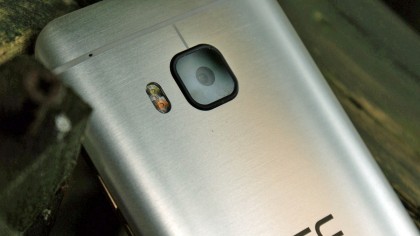
That temporary step away from UltraPixels (the HTC 10 brings the terminology back) is a big disappointment, as HTC was the one big Android brand striking out against the need for loads of pixels to take a good picture, instead going for the innovative combo of a 4MP sensor that could nab loads of light and a secondary sensor for clever effects.
HTC was evidently trying to stand shoulder to shoulder with similarly spec'd offerings from Samsung and Sony, but it's only been partially successful. A good camera today needs to have a fast start up and shutter speed, excellent detail, accurate color reproduction and good low light performance, and it's clear HTC has gone in hard for all of these.
The One M9 generally has a very good performance in most conditions, whether it's low light, bright scenes or changeable conditions. The sharpness of the pictures is clear and the color tone, although a little more muted, looks more mature than the over-coloration of the One M8.
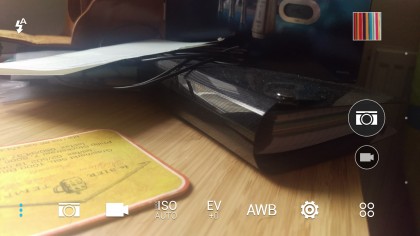
What's clear is there's a lot of post-processing going on throughout the photography process, and it's very good for the most part. It's evident that HTC has tried to offset the loss of low-light performance by boosting the exposure after the shutter is pressed – but this results in a lot of noise.
The flash isn't brilliant either, with the high power light taking over night pictures. The amber LED in there is designed to help improve skin tone, and while it does do that, the entire snap is a little over exposed.
The big annoyances here, though, are the shutter speed (and, to an extent, the start up time, which is far behind the iPhone 6 and the Galaxy S6) and the time taken to autofocus as well.
The biggest culprit was HDR mode, which forced the One M9 to pause for a while before even beginning to start processing the shot in darker conditions. Again, this isn't the sort of thing I'd have expected from a recent flagship processor.
And the result, thanks to the lack of autofocus and the slow start to processing, is often muddy and lacks definition.
So while low light performance has dipped appreciably, the general performance has more than improved enough to take its place. In general daylight, I was really impressed with the performance of the One M9. OK, it's nothing different to the rest of the market, but it gives you quality and sharpness time and again.
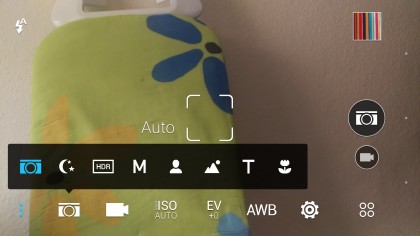
The field of view is lowered though, thanks to the higher number of megapixels. This means you don't get as much info into the sensor, and where Apple is improving this year on year, HTC just took a step backwards to get more pixels into the mix.
The front facing camera, now using the UltraPixel sensor from the rear of the One M8, is miles better.
It captures a huge amount of detail and really removes the need for a flash – something a lot of people have been calling for on other handsets.
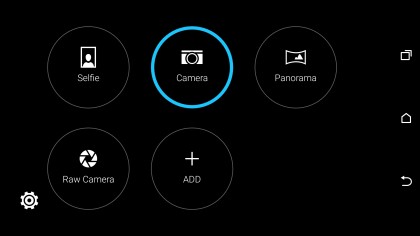
The beauty modes are still present, with the ability to smooth skin and increase the size of your eyes to a scary level. Face fusion, where you can work out what the demon spawn of you and your friend would look like, is also offered – and great fun down the bar.
The other area that HTC has traditionally been strong is the after effects party, with the Zoe ability to take short videos and mix them with pictures a really cool trick.
This year, Zoe has been moved to a separate app, been taken off as a camera option and been replaced in post processing with a lot of, well, useless effects.
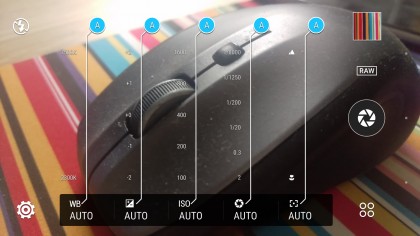
I don't really get why HTC is making such a big deal about the ability to do things like double expose your photos – they just end up looking like you've messed up two snaps, unless they happen to perfectly complement one another.
Similarly the prism and stripe effects, allowing you to 'remix' your image – it just seems like a good way to create a Pink Floyd album cover. It doesn't make them look any better, and it's certainly not something I'd share on social media and be proud of.

Gareth has been part of the consumer technology world in a career spanning three decades. He started life as a staff writer on the fledgling TechRadar, and has grew with the site (primarily as phones, tablets and wearables editor) until becoming Global Editor in Chief in 2018. Gareth has written over 4,000 articles for TechRadar, has contributed expert insight to a number of other publications, chaired panels on zeitgeist technologies, presented at the Gadget Show Live as well as representing the brand on TV and radio for multiple channels including Sky, BBC, ITV and Al-Jazeera. Passionate about fitness, he can bore anyone rigid about stress management, sleep tracking, heart rate variance as well as bemoaning something about the latest iPhone, Galaxy or OLED TV.
